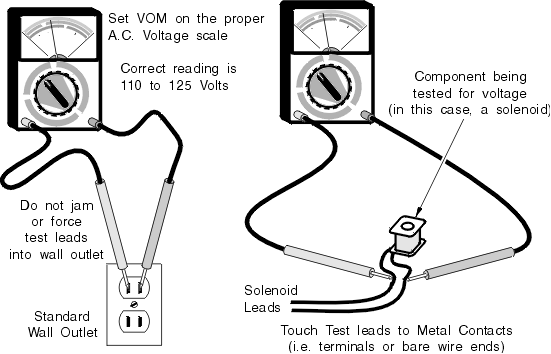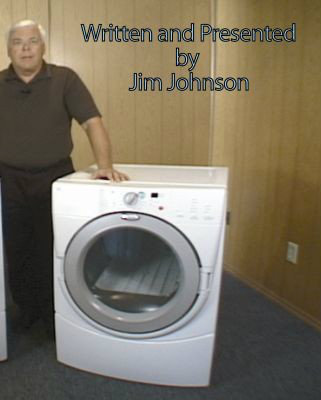Clothes Dryer Diagnostic Guide
Clothes Dryer Troubleshooting Diagnostic GuideUse the diagnostic chart to find out what is causing the problem with your clothes washing machine. Look up the symptom, and then review some of the possible causes. Follow the links from the possible causes to facilitate the tutorials on how to repair the problem. |
|
Symptom |
Click on underlined items for further course information
|
Dryer Venting & Installation Guidelines Check for Brands
Manuals online
Most repairs to dryers(depend on brand) require that you remove the top and front (not the backor sides) to access the parts. Searches: To how to install an exterior dryer vent. |
INSTALLING DRYER PROPERLY VERY IMPORTANTThe leading causes of home clothes dryer and washer fires is failure to clean (32%), followed by unclassified mechanical failure or malfunction (22%). Eight percent were caused by some type of electrical failure or malfunction.
|
|
Dryer does not work at all Check for a blown fuse or tripped circuit breaker Electric Shock can cause injury or death
|
|
|
Dryer tumbles, but there is no heat
|
Clothes Dryer TutorialsBasic Electricity InstructionalsMajor Appliances Electrical FundamentalsUnderstanding Electricity, Test Instruments |
|
Dryer takes too long Checking air flow & venting hose
While your dryer is still running, and before you disconnect its power supply, place your hand over the exterior vent while it is running. You should be able to feel a strong air flow. If the air flow is weakened at all, check the following areas:
General Trips: Airflow restriction is the problem cuasing long drying times. The ducting could be to long causing lint to build-up inside of ducting. Lint than will collect mouster causing a back pussure build-up, thus clothing will stay wet. Fabric-sheet film buid-up on the lint filter what causes dryer units to catch fire and potentially burn the house down." The best way to avoid these problems, is to take that filter out and wash it with hot soapy water and an old toothbrush (or other brush) at least every six months. The duct can caked with lint. And once it is caked with lint can soak uo the mositer become wet. This because all that water that came out of the wet laundry had to go somewhere, if it doesn't making it all the way outside. Stayinf inside the dryer, clothing or ducting, itcan become so wet that water will dripping out of the duct at the joints, getting into the wood(wood-rot) and the back of the drywall, where it will start to grow black mold. All of this danmage can add up to $10,00o dollars. Occasionally wipe the sensor with a soft cloth or cotton ball and rubbing alcohol to keep it functioning accurately. Sensors are usually located on the inside of the dryer, just below the door opening, and can be hard to find. They are usually two curved metallic strips, shaped somewhat like the letter "C"." |
General Information from http://www.consumerreports.org
|
|
Drum Not turning, here the motor going
Clothes Dryer Tutrials
|
|
|
Dryer overheats Clothes Dryer Tutorials |
|
|
Dryer will not stop automatically Clothes Dryer Tutorials |
|
|
Dryer is noisy
|
|
|
Light won't turn on |
|
|
Dryer give clothes a bad odor General Trips: Check washer or clothes befor put inside washer. CLEAN OUT POCKETS |
|
|
Clothes are damaged or stained General Trips: Usually item brought in to the drying load, such as nuts left in side the pockets or cosmetics |
|
Learn to use Multimeters |
*Continuity test is the checking of an electric circuit to see if current flows in a solanold, contact is made inside a switch or motor winding are good.(that it is in fact making a complete circuit). A continuity test is performed by devices that can be used to perform continuity tests include multimeters which measure current and specialized continuity testers which are cheaper, more basic devices, generally with a simple light bulb that lights up when current flows. SEE: Electrial Fundamentals Course When a bad motor winding cannot be found by a physical inspection, many times an ohmmeter may show that there is a defective winding. Read more: How to Test Electric Motor Windings Ohmmeter usages. While the ohmmeter may not show potential failures, it can be used to determine if the windings are good or bad.
|
|
Whirlpool Duet Dryer
|
Whirlpool Test Code
Diagnostic Instruction
|
 Default Currency
Default Currency
 Canadian Dollar
Canadian Dollar


